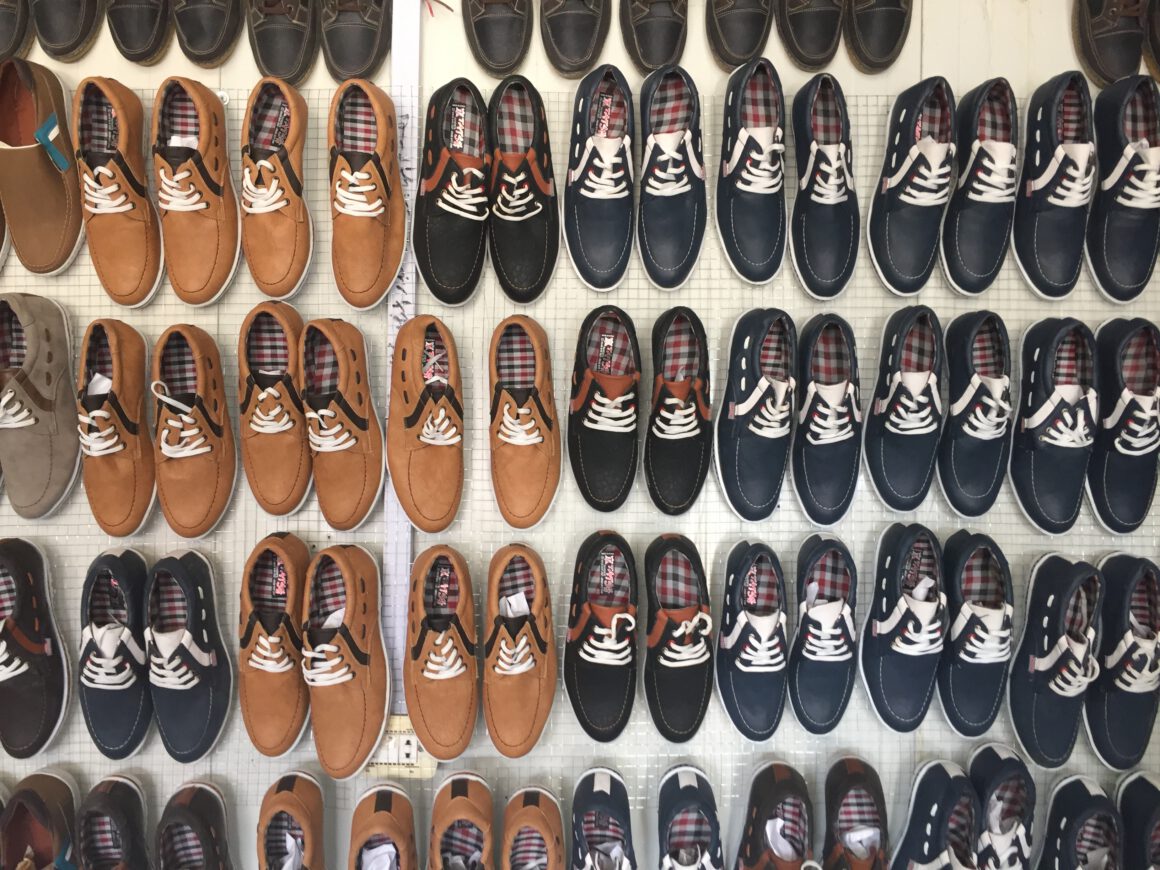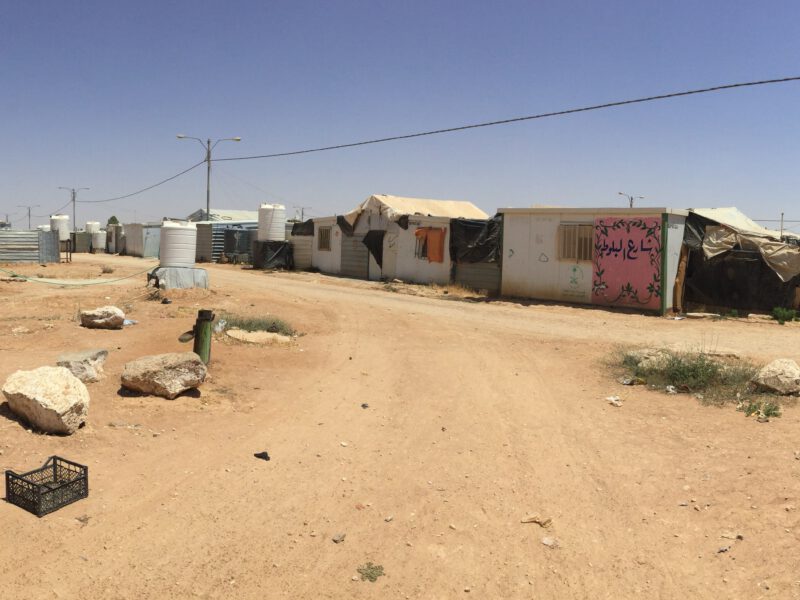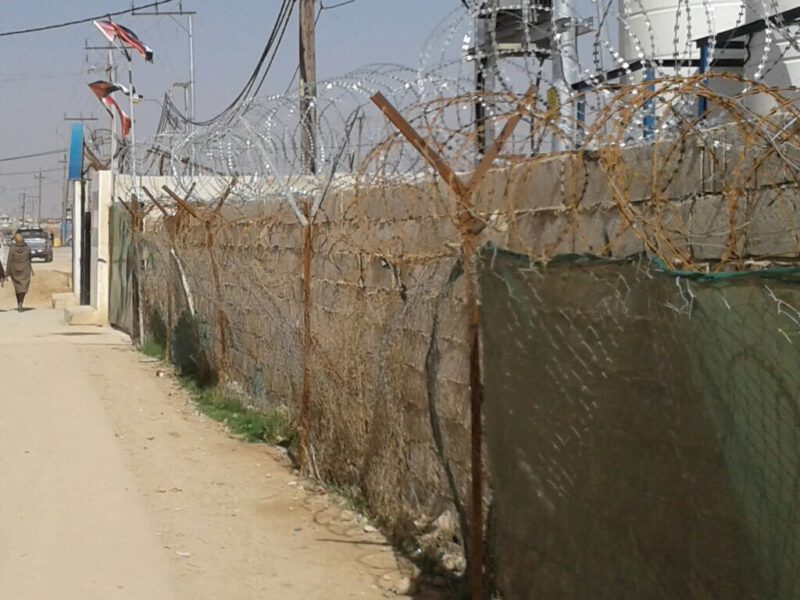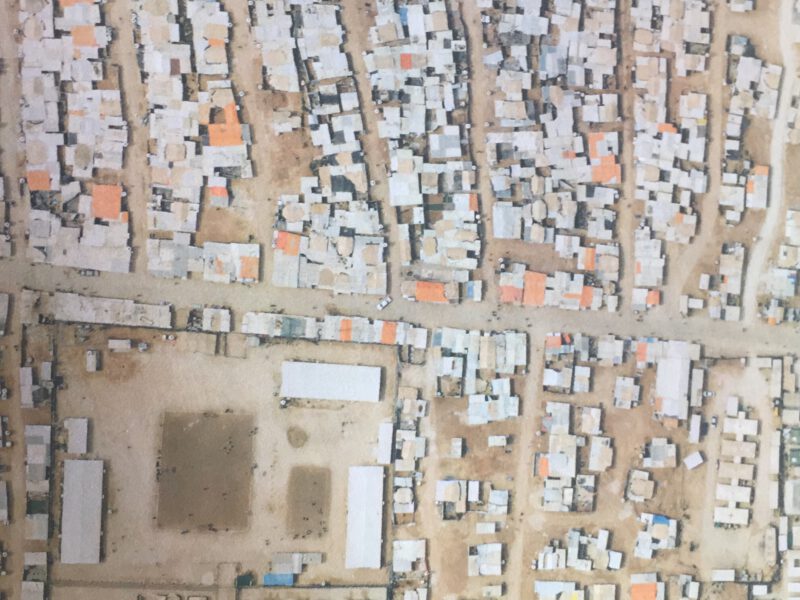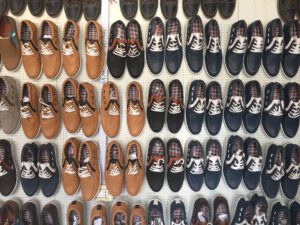
The last weeks I tried to build me an image of the economy of Za?atari refugee camp where I am stationed for half a year. I found documentation on internet, spoke to inhabitants and I used my eyes walking through camp. I will try to give an image of the economy of the camp and what I think it means for its people and the urban space. One main conclusion is that the camp is an economic island and the other is that things are changing.
As far as I can see the economy of the camp consists of three major components: investments by foreign institutions, a formal economy & cash for work and an informal economy.
Investments
Most of the infrastructural works are paid for by foreign investors. The solar power plant for instance and the water and sewerage network are paid for by the German Development Bank (KfW). Construction is executed by a Jordan contractor and managed by Unicef and UNHCR. The contractors are obliged to hire refugees who are paid in a cash for work system.
A formal economy
Za?atari refugee Camp is paid for and managed by international aid organisations. On a daily basis the camp costs $500.000,-. The money is used to pay the electricity bill, the staff of all NGO,s and aid organisations, cash for work, heath care, schools etc. Aid organisations like FAO also give vouchers so the inhabitants so they can buy food in one of the camp?s super markets. People receive their caravans from aid and clothes, blankets, mattresses and kitchen equipment is distributed at special centres. For me it feels strange but this is the formal economy of the camp, acting within the Jordan tax and legal systems. It?s strange because it is not a real liberal economic system we see in the rest of the country and the world, based on demand and supply, based on legal systems. Normally people pay for electricity, water, sewerage and food. And normally people pay taxes and earn money through work. I am sure the Syrian people want a normal economic system as well. But only a limited number of people have permits to work outside camp, to work in agriculture and the construction industry.
Cash for Work.
According to UNHCR 36.000 JD (Jordan Dinar : 1,3 times 1 Euro) is paid daily as cash for work and the people executing the work are called volunteers. Volunteers work for instance as teacher on schools, as employee in community centres, they collect household waste and separate waste at the waste separation plant, or people work for contractors building sewerage systems, electricity lines and water networks. Cash for Work is a way for the people to earn some money and to escape lethargy. The amount of money available for cash for work will diminish the coming years.
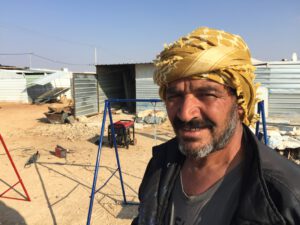
The Informal economy
The informal economy is growing. The informal market of the camp consists of more than 3.000 small shops and businesses and day after day I see new shops being build all over camp. The shops are not only a means for generating income, but are a demonstration of resistance, and a strong will to survive. Besides the random and free placing of the cabins all over camp, the marked is another significant expression of the urbanisation process of the camp. According to several sources, some years ago the market generated more than 10 million JD per year and at the moment it is maybe more than cash for work. About 60% of the working age population earn in the informal market. There is another not so romantic informal market too and that is child labour. Because of the poverty of some families, children work on the fields instead of going to school. I also see boys earning some money with wheelbarrow transporting stuff around town, or working in one of the shops.
The economy shapes the urban appearance of the camp. Shops are build and added to the existing urban structure. People redesign their cabins by adding small shops. People improve their cabins after some earnings, through adding roofs, concrete floors and small gardens. Roads are used to bring supply into the camp with trucks and, carts, pickup trucks, wheelbarrows and cycles distribute the stuff around. Za?atari is a vivid and bustling, growing urban space and urban economy.
But the informal economy is greatly ignored by the government and the NGO?s. It is a sensitive thing no one wants to touch till now. Maps of the informal marked are not shared although the data about it is available.
One day or another the economy of the camp and the urban representation of it has to change. I am reading a book from Alexander Watts and Paul Collier: Refuge, transforming a broken refugee system. The only way is to align the economy of the camp to the economy of the county. I realise this is easy said than done. To do so the existing systems of cash for work, free services, no tax, child labour and ignoring the informal marked need to change. The EU and the Jordan government made agreements to move industry form Europe to the industrial free zones of Mafraq, the governorate where Za?atari is situated. And this is a lesson form Alexander and Paul. IKEA?is one of the industries building production facilities in Mafraq where Jordanians and Syrians can work. One step in the direction of normalising the economy.
